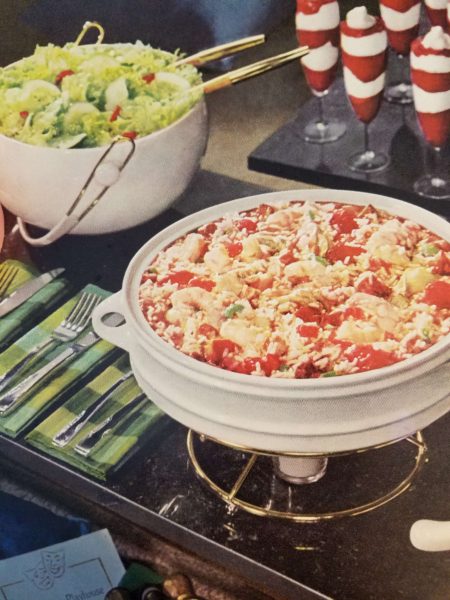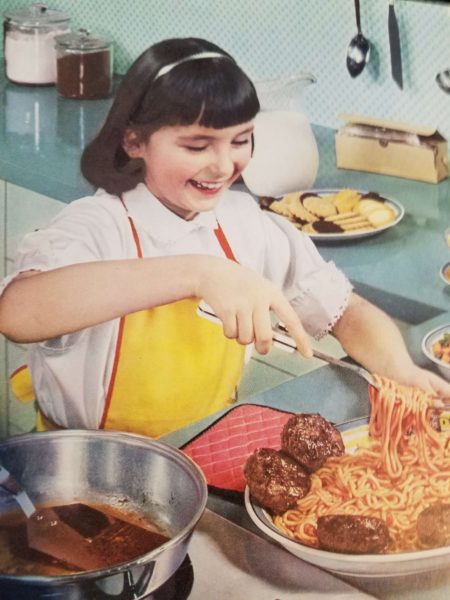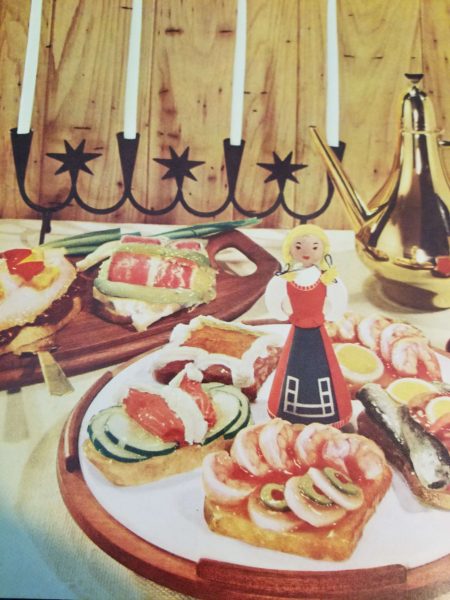I am one of many people who have fallen into the sometimes colorful and sometimes frightening world of vintage cookbooks. I have purchased lots of these ‘pamphlets’ online and spent hours pouring through them. Sometimes I find something novel that I want to try. Sometimes I find a good idea that I fold into my cooking repertoire. And sometimes I guffaw in humor and astonishment at what women before me were told to feed to their families.
My wonderful husband got me a box lot for Christmas one year that kept me busy for quite some time. In it, was The General Foods Kitchens Cookbook designed and produced by Stahley Thompson Associates. © 1959 Random House, Inc.: New York. There was some genuine weirdness in this book, so I thought I would share.
First off, how is it that foods always look strangely inedible? That casserole on the left seems as though it is put together with normal ingredients, and yet, none of them have melded or melted in a way that you would expect from a prepared dish. Same goes for the open face sandwiches on the right. The photos here, and in so many other cookbooks, remind me of the plastic food that is sometimes used as window display in Japanese restaurants. While there is nothing obviously wrong with it, it still does not seem edible.
Center: remember when you are cooking, crafting, darning, doing laundry, washing the dog, or scrubbing the floors, SMILE! And, pass it on to your daughters.
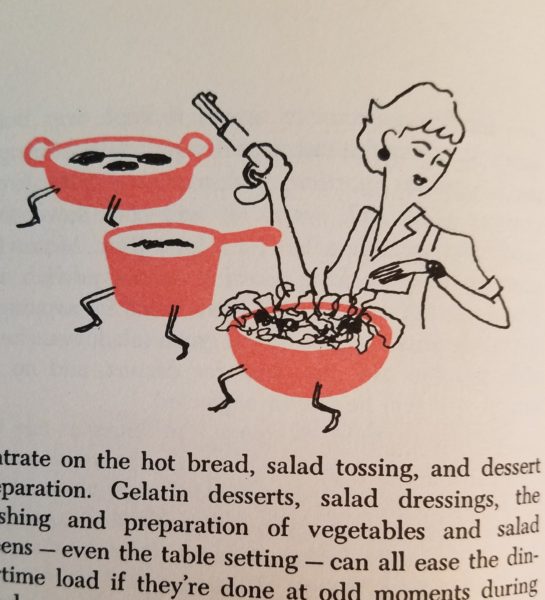
Wait, what?
In addition to daily meal ideas, there is some instruction for the housewife trying to do many things on a tight schedule. This section of the book resulted in the most strange and entertaining illustrations. For example: drop that revolver in your hot pot!
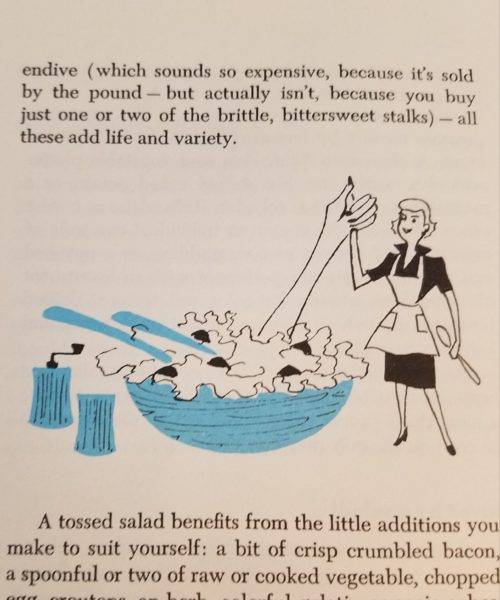
Hand salad, little lady
This illustration is just surreal. Why is the cook so tiny? Or, is it that that salad is really big? And, why is there an enormous arm and hand erupting from it as if the hand’s owner were sucked into the salad quick sand?
Being astonished and amused by the pictures, illustrations, and the never-ending barrage of molded (aka gelatin) salads is one of the understood pleasures of vintage cookbooks. So much so, that you will find plenty of books just poking fun at pictures without really paying attention to the underlying recipes, culture, or women the books were written about, within, and for. A rare standout, which I absolutely loved reading, is American Advertising Cookbooks: How Corporations Taught Us to Love Bananas, Spam, and Jell-O by Christina Ward.
If you ever wonder why we eat what we eat, why grocery chains sell us what they do, and why our habits of food consumption are sometimes lazy, wasteful, and strange, then Christina Ward’s book is for you. It dissects the cultural, political, and commercial drives that made some foods a staple in grocery stores, like pineapples and bananas, while other foods are not. With plenty of illustrations from the original publications, it puts a new spin on understanding them by pointing out the religious, racist, and prejudiced imagery they included to firmly ground them in the society to whom they were selling.

